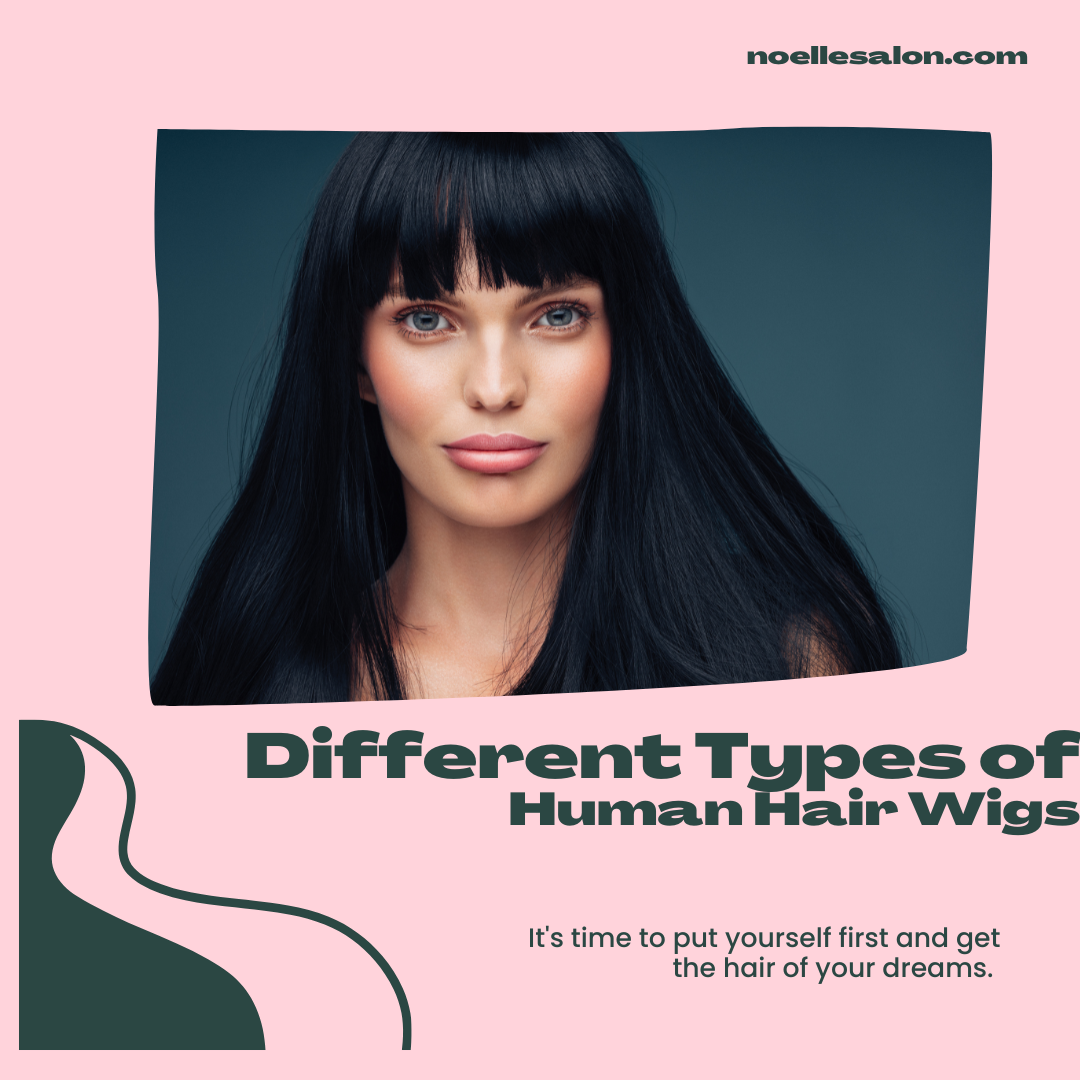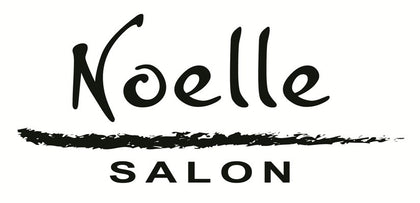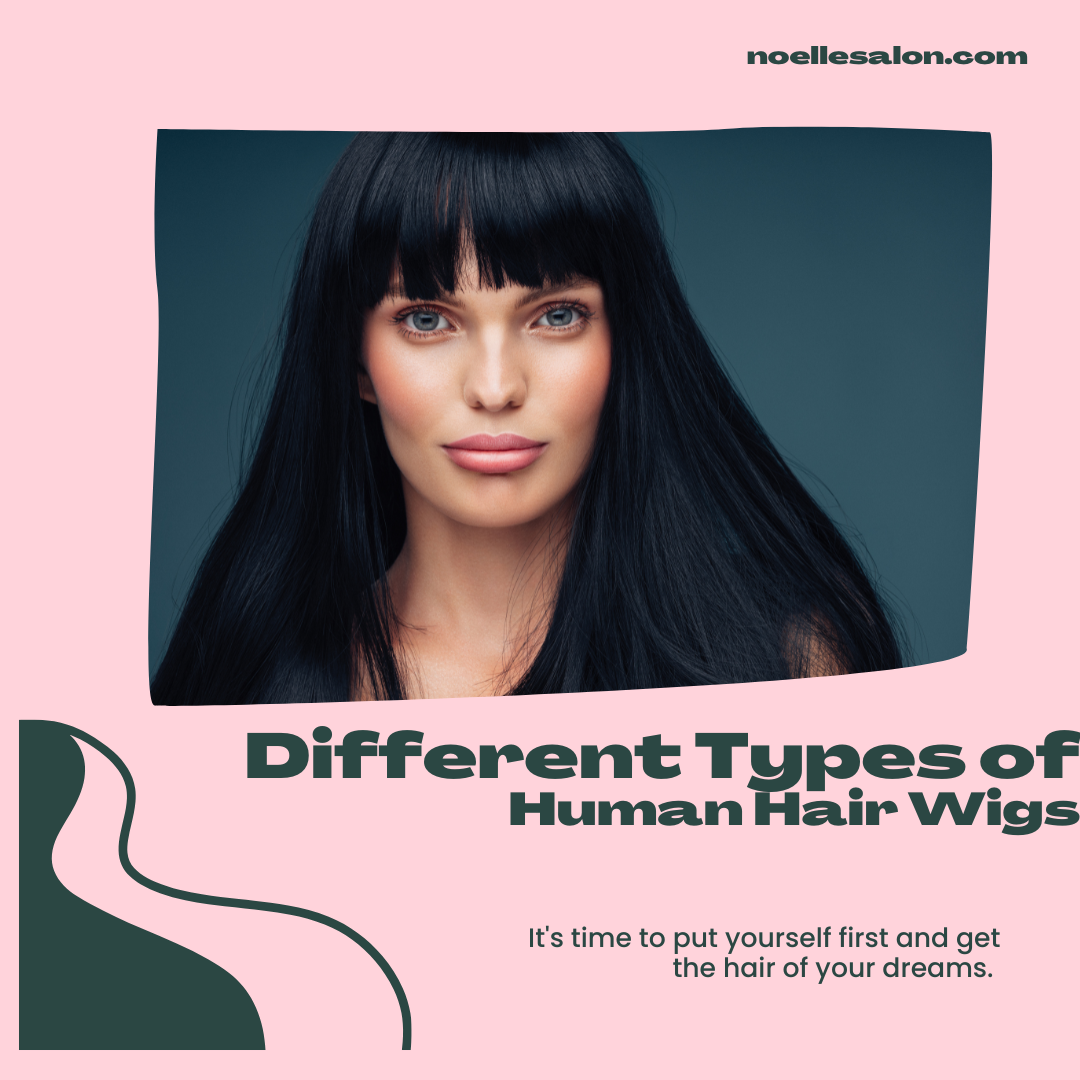Explore the Different Types of Wigs for Every Style

Why Are Human Hair Wig Types Important?

Awareness of the different types of human hair wigs immensely contributes to a successful purchase. Each wig type has distinct features that cater to various needs, personal preferences and uses.
Understanding their specifications can influence the wig's capacity to complement your looks, offer styling versatility, and ensure adequate coverage for different styles. Whether for daily wear, special occasions, or those buying a wig for the first time, choosing the right wig type is one of the key factors that make a huge difference.
Hence, getting acquainted with the human hair wig types is crucial.
What Are The Different Types of Human Hair Wigs?
A myriad of different types of wigs exist in the market today, greatly affecting an individual’s overall appearance. The following sections provide a detailed exploration of these human hair wig types, their characteristics, and their upsides and downsides.
1. Remy Human Hair Wigs

Considered premium in wigs, Remy human hair wigs boast an undisrupted cuticle layer, which means the hair pieces stay aligned in the same direction from root to tip. This alignment results in minimized tangling, giving a natural appearance and texture. The processing of Remy's hair ensures the preservation of the hair cuticles, enhancing its durability and look. However, this comes at a relatively higher cost compared to other types.
Here are the pros and cons of Remy hair wigs:
-
Pros: Natural-looking; less prone to tangling; durable; versatile in terms of styling
-
Cons: Need for regular maintenance; higher price range
2. Non-Remy Human Hair Wigs
Non-Remy human hair wigs, usually cheaper than Remy wigs, involve hair collected from various donors. The different directions of the hair cuticles can lead to more tangles and mats. Once collected, the hairs undergo a process to ensure alignment; however, this could strip off the cuticle layer, reducing natural luster and longevity.
Here are the pros and cons of Non-Remy hair wigs:
-
Pros: Affordable; wide variety available; suitable for temporary or short-term use
-
Cons: More prone to tangles and matting; lesser lifespan; limited styling options
3. Lace Wigs (Full Lace and Lace Front)
Popular among wig wearers, lace wigs owe their name to their base material, which is made from sheer lace mesh that matches your scalp color. The hand-tied hair gives an illusion of natural growth, offering excellent versatility for any hairstyle without compromising its natural appearance. There are two types of lace wigs made from lace material: Full Lace Wigs and Lace Front Wigs.
Full lace wigs, apart from their realistic look due to the full-coverage lace mesh, offer versatility, catering to a variety of hairstyles and various looks, from ponytails to side partings. Despite the higher cost, their comfort and lightness make them popular among users.
On the flip side, lace front wigs only utilize lace on the frontal part covering the forehead. Thus, they provide a realistic natural hairline despite the limitation of hairstyles to the central or side-focused ones. However, the substantial advantage is that they suit people who prefer to let their hair down without showing wig edges.
Here are the pros and cons of Lace wigs:
-
Pros: Natural-looking, versatile in terms of hairstyling, comfortable and breathable.
-
Cons: Fragile and requires care during handling, might need custom fitting, and residue from lace tape or adhesive.
4. Monofilament Wigs
Sharing similar attributes with lace wigs, monofilament wigs also come with a mono-mesh base. The hair strands are individually tied to the base, facilitating freedom of movement for the hair and making the wig suitable for streamlined hairstyles. These types of wigs can hold up well against regular wear and offer an impressive natural look with a realistic scalp appearance and realistic look.
Here are the pros and cons of Monofilament wigs:
-
Pros: Natural appearance; enduring construction; versatility in parting.
-
Cons: Limited volume; higher price due to hand-tied process.
5. Combination Wigs
Combining wigs is a middle ground between full monofilament and machine-made wigs, combining hand-tied and machine-sewn elements. Their natural appearance and reduced cost due to the lesser labor-intensive manufacturing process make these wigs a popular choice among users.
Here are the pros and cons of Combination wigs:
-
Pros: Natural movement of hair; less expensive than 100% hand-tied wigs.
-
Cons: Limited styling options; less natural-looking compared to fully hand-tied wigs.
6. Capless Wigs
A no-frills option for first-time users, capless wigs offer excellent durability and comfort. Commonly referred to as open-weft or open-cap wigs, these wigs use machine-sewn hairs attached to an elastic cap. Despite their artificial look, capless wigs have gained popularity due to their breathability.
Here are the pros and cons of Capless wigs:
-
Pros: Affordable, durable, breathable, and easy maintenance.
-
Con: Unrealistic appearance without scalp mimicry.
7. Polyurethane Thin Wigs
Scientifically named PU Thin wigs are a type of wig made of a plastic called polyurethane. A suitable option for women with total hair loss, these can provide an incredible natural look without adhesives.
Here are the pros and cons of Polyurethane thin Wigs:
-
Pros: It matches scalp skin tone, is best for complete hair loss patients, and is easy to maintain.
-
Cons: Uncomfortable for women with full hair; not breathable; higher cost.
8. Virgin Human Hair Wigs

For those preferring untouched hair, Virgin human hair wigs use hair that hasn't been chemically processed. Their natural and luxurious appearance makes these wigs a preferred choice for many.
Here are the pros and cons of Virgin human hair wigs:
-
Pros: Natural appearance, high durability, and can withstand chemical treatments.
-
Con: Expensive
9. Non-Slip Wig
Suitable for individuals with a sleek scalp, non-slip wigs use silicone or polyurethane panels to grip onto the wearer's head. They're perfect for users experiencing complete hair loss.
Here are the pros and cons of Non-Slip wigs:
-
Pros: Grips the scalp; perfect for users with total hair loss.
-
Con: It may cause slight chafing.
10. Hair Toppers

Designed to supplement volume to thinning hair, hair toppers are smaller than traditional wigs but significantly impact appearance. They can be made from human hair or synthetic fibers, making them a favorite solution for those suffering from progressive hair thinning.
Here are the pros and cons of Hair toppers:
-
Pros: Perfect for volume and coverage; versatile in styling, particularly synthetic hair wigs.
-
Cons: Not meant for complete hair loss areas.
Silk Top Wigs
Silk top wigs are renowned for their exceptional realism and natural appearance, making them one of the top wigs available. The unique construction involves a silk base that skillfully hides the knots where the hair strands are tied, creating the illusion of hair growing directly from the scalp. This design not only enhances the wig's aesthetic but also eliminates the need for bleaching the knots, making it a preferred choice among those seeking a flawless scalp effect. The silk material provides a soft and comfortable fit, allowing for versatile styling in any direction—essential for achieving your desired look. However, it's important to note that silk top wigs may come at a higher price point due to their intricate craftsmanship and high-quality materials. Overall, these wigs offer a luxurious option for those wanting a realistic appearance without sacrificing comfort.
Glueless Wigs
Glueless wigs present a convenient solution for individuals looking for ease of use without sacrificing security. Designed with adjustable straps, combs, or clips, these wigs eliminate the need for the use of adhesive, allowing for quick application and removal. This feature makes them perfect for those who may have sensitivities to glue or simply prefer a mess-free experience. Glueless wigs also provide a comfortable fit, ensuring they stay securely in place throughout the day. Additionally, their versatility allows for easy styling changes in various ways, making them suitable for various occasions. However, while they offer many benefits, users should still ensure a proper fit to prevent any slipping during wear. Overall, glueless wigs are an excellent choice for anyone seeking practicality and comfort in their wig-wearing experience.
Sewn-In or Weave Wigs
Sewn-in or weave wigs are known for their durability and long-lasting wear, making them an ideal option for those looking for a secure fit. This type of wig is integrated with the wearer's natural hair through a braiding process, providing a seamless and natural look. The stitched wefts allow for versatile styling, enabling the wearer to experiment with different hairstyles while keeping their natural hair protected underneath. One of the significant advantages of sewn-in wigs is their ability to withstand daily activities without the fear of slipping or shifting. However, it is essential to have them installed by a professional to avoid potential damage to the natural hair. With proper maintenance, these wigs can offer both comfort and style, proving to be a cost-effective investment for those seeking longevity in their wig choice.
Clip-in Wigs
Clip-in wigs and hair extensions offer a versatile and user-friendly option for those wanting to enhance their hairstyle without a long-term commitment. Featuring small clips sewn along the base, these wigs can be easily attached and removed, allowing for quick transformations. They typically consist of multiple wefts of hair, perfect for individuals looking to add volume or length for special occasions or everyday wear. Clip-in wigs and hair extensions come in various styles and colors, enabling users to experiment with different looks without damaging their natural hair. However, while they are convenient, it's crucial to ensure the clips are properly secured to avoid any discomfort or slipping throughout the day. Overall, clip-in wigs provide a fantastic solution for those seeking flexibility in their hairstyling options.
HD Lace Wigs
HD lace wigs are a game-changer in the world of wig technology, offering an unparalleled realistic look. Constructed with high-definition lace, these wigs are virtually undetectable and provide an invisible hairline, making them a favorite among wig enthusiasts. The ultra-thin lace material allows for great breathability and comfort while giving the illusion of hair growing directly from the scalp. These wigs can be styled in various ways, from updos to loose waves, without compromising their natural appearance. However, the delicate nature of the HD lace requires careful handling to prevent damage. Overall, HD lace wigs are an excellent investment for anyone looking to achieve a flawless, natural look that enhances their style.
French Drawn Top Wig
French drawn top wigs are distinguished by their unique construction, which features individual hairs hand-tied into a layer of silk mesh at the crown of the wig. This meticulous approach results in an exceptionally realistic appearance, giving the illusion of natural hair growth. The French drawn top design allows for versatile styling, enabling wearers to part their hair in any direction while maintaining a seamless look. Additionally, the silk mesh provides added comfort against the scalp, making it an excellent choice for those with sensitive skin. However, due to the intricate craftsmanship involved, these wigs may come with a higher price tag. Overall, French drawn top wigs are perfect for individuals seeking a high level of realism and comfort in their wig experience.
Traditional Weft Wigs
Traditional weft wigs remain a popular choice for those seeking a cost-effective and practical option. These wigs feature machine-sewn wefts of hair attached to a standard cap, offering a straightforward and accessible design. Although they may not provide the same level of realism as lace or monofilament wigs, traditional weft wigs come in various styles, colors, and lengths, making them versatile for different occasions. They are also relatively low-maintenance compared to other types, as they hold their style well without requiring extensive upkeep. However, users should be mindful that the bulkiness of the cap can limit styling options. Overall, traditional weft wigs are an excellent choice for those looking for a budget-friendly solution without compromising on style.
What Are Some Factors to Consider When Choosing a Human Hair Wig?
When choosing the perfect human hair wig, you must consider several factors. These include the wig density, the wig cap construction, the length and style of the wig, and lastly, your budget and maintenance needs. Let's briefly talk about these factors now.
1. Wig Density
The density of a wig refers to the thickness of the hair on the wig cap. Higher-density wigs offer more volume and are ideal for those seeking a fuller look. However, they may also require more maintenance. Lower-density wigs offer a more natural look and are easier to manage but might need more volume. The right balance would be a medium-density wig, which provides a realistic look and enough volume.
2. Wig Cap Construction
A wig's cap construction significantly affects how it fits and feels when worn. Various constructions include lace front, full lace, monofilament, and capless. Each offers unique features - lace fronts and monofilament caps give a very natural look, full lace wigs allow for various styling options, and capless wigs are typically lighter and more breathable. Understanding these wig cap constructions can significantly influence your overall satisfaction with your final choice.
3. Wig Length and Style
The length and style of your wig depend mainly on your lifestyle and personal preference, including how it sits at the nape of your neck and your front hairline. Most wigs come in standard sizes, with adjustable straps for a snug fit, even though you can use a flexible measuring tape to measure your head and neck while getting one. Additionally, the style of the wig plays an important role. It can range from perfectly straight to curly or wavy, depending on your preference. Next, proper color selection is essential in ensuring a natural look.
4. Budget and Maintenance
Your budget determines the kind of wig you can afford. While human hair wigs are generally more expensive than synthetic wigs, they also offer a more natural look and feel, contributing to a more realistic look and comfortable fit. Furthermore, your budget should also account for maintenance expenses, such as special shampoos, conditioners, and periodic professional styling, without excessive heat. Choosing a wig that fits your budget while meeting your style needs, including a wide range of styles, and comfort is crucial.
Conclusion
The key is selecting a wig that enhances your look and aligns with your lifestyle, ensuring comfort and confidence. Whether you seek the luxury of virgin hair or the versatility of full lace, there's a perfect wig to amplify your style.
Additionally, if you're looking for a custom wigs option or just want to check out extensions before trying your hands on hair wigs, Noelle Salon can help you in your styling journey. Our experts first provide you with the best consultation service and can also help you get possible same-day wig and extension service.
So, without further ado, book an appointment with us and get ready for an all-in new look now!
Frequently Asked Questions
What is the best type of human hair for wigs?
The "best" type depends on individual preferences and needs. However, due to its quality and durability, Remy's human hair is often recommended for wigs. These wigs have a smooth texture and are perfect for a variety of styling techniques.
What type of human hair wig is the most costly?
Virgin human hair wigs are usually the most costly due to their high quality. They are made from unprocessed real hair, meaning the cuticles are intact; thus, they look very natural and last longer, just like your own hair.
ate, the amount of styling products used, and personal sweat levels. Remember to use products specifically made for wig care.




